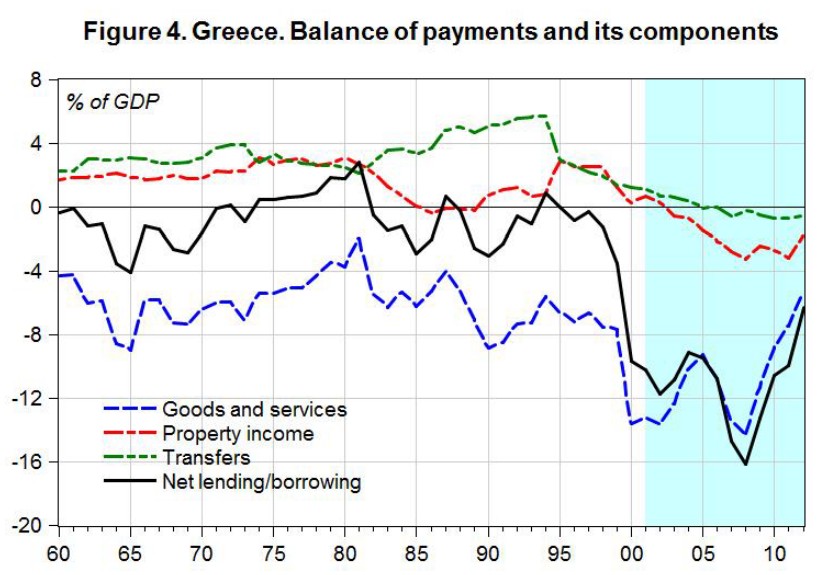

One of the functions of RBI is to lay down policies for the effective functioning of the banks. This banker of banks can revise these main function of rbi policies whenever the situation demands. It also lays down distinct rules and regulations for the functioning of the banks.
These small-value loans typically run to those sections of the population that are weaker sections of society and needed special attention and to the section intensively employed in agriculture and small enterprises. Moreover, when RBI came into force it takes over the functions of Government so far being performed by the Controller of Currency and from the Imperial Bank of India. For the latest updates, news blogs, and articles related to micro, small and medium businesses , business tips, income tax, GST, salary, and accounting. This support assures the accuracy of the financial statements as well as the books of account which are presented to the regulators. Functions of RBI notes for business students and interested persons.
The central bank needs to contend with a slightly unstable inflation rate that is expected at 2.4% in the year 2019, 2.9% to 3% in the initial half of 2020, and 3.5% to 3.8% in the second half of 2020. When foreign exchange reserves are inadequate for meeting balance of payments problem, it borrows from the International Monetary Fund . It also administers exchange control of the country and enforces the provisions of Foreign Exchange Management Act, 1999. Development and maintenance of foreign exchange market in India is also the function of RBI. CRR is one of the most commonly used by RBI as quantitative tool of credit control. The ratio specifies minimum fraction of the total deposits of customers, which commercial banks have to hold as reserves either in cash or as deposits with the central bank.
Banks will pass this increased cost to their customers which make borrowing costly in whole economy. Fewer people will apply for loan and aggregate demand will get reduced. Although when RBI reduces Repo rate, banks are not legally required to reduce their base rate. Role of RBI differs from other banks since it does not get engaged in day to day retail banking; does not do micro or macro regular financing. On the contrary, it is the Bankers’ Bank and formulates monetary guidelines and policies which are to be followed by all the banks operating in the country.
All banks can receive loans from RBI by rediscounting of bills and against approved securities. The RBI is the sole authority for the printing and issue of all currency notes in India except one rupee note. It is the duty of the RBI to ensure that sufficient number of goodquality currency notes is available to the public. One rupee note and all coins are issued by the Ministry of Finance.
To operate currency and credit system of the country to its advantage. Just upload your form 16, claim your deductions and get your acknowledgment number online. You can efile income tax return on your income from salary, house property, capital gains, business & profession and income from other sources. Further you can also file TDS returns, generate Form-16, use our Tax Calculator software, claim HRA, check refund status and generate rent receipts for Income Tax Filing.
Moreover, the Reserve Bank Governor and a max of four Deputy Governors are ex officio Directors on the Central Board as well. Initially, the ownership of almost all the share capital was in the hands of non-government shareholders. So in order to prevent the centralisation of the shares in few hands, the RBI was nationalised on January 1, 1949. As per RBI’s regulation, Banks needed to maintain certain reserves in the form of CRR and SLR. Such research undertaken by RBI focuses on issues and problems arising at the national and international levels, having a critical impact on the Indian economy. Priority sector guidelines don’t provide a preferential interest rate for loans to the sector.
The Monetary Policy Committee is entrusted with the task of fixing the benchmark policy interest rate for inflation targeting. The RBI collects and compiles statistical/data information on banking and financial operations, prices, FDIs, FPIs, BOP, Exchange Rate and industries etc., of the economy. It has also been entrusted with the task of collection and compilation of statistical information relating to banking and other financial sectors of the economy. RBI monthly bulletin, annual report and various committee reports contain treasures of authentic data.

The RBI recommends the Central Government about denomination of bank notes i.e. ` 2, ` 5, ` 10, ` 20, ` 50, ` 100, ` 500, ` 1,000, ` 2,000, ` 5,000 & ` 10,000 or other denominations not exceeding ` 10,000. After the issuing such notification the general superintendence and direction of the affairs of the RBI shall be entrusted to such agency as the Central Government may determine. Such agency may exercise the powers and do all acts and things which may be exercised or done by the Central Board under the Act.
It also represents the Indian Government, as a member of the International Monetary Fund and the World Bank. The most important function of RBI is the issuance of currency notes and coins, except the one rupee note and coin which are issued by the Ministry of Finance. However, the agency of distribution of all notes and coins issued by the Government of India is the Reserve Bank of India. Developmental role Performs a wide range of promotional functions to support national objectives. Prescribes broad parameters of banking operations within which the country’s banking and financial system functions. As discussed earlier, RBI executes Monetary Policy for Indian Economy.
However, the independence of RBI has been challenged many times due to a continued tug of war for wresting more power between the bank and the govt. CRR is the share of Net Demand and Time Liabilities that banks must maintain as cash with RBI. So if a bank has 200 Crore of NDTL then it has to keep Rs. 8 Crore in cash with RBI. RBI has an important role to play in regulating & managing Foreign Exchange of the country. RBI also works to prevent counterfeiting of currency by regularly upgrading security features of currency. RBI prints currency at its 4 currency printing facilities at Dewas, Nasik, Mysore and Hyderabad.
Some of these rates include the policy rates, bank rates, marginal standing facility rates, repo rates, and reverse repo rates. The percentage of the reserves of the other banks that the RBI keeps with itself is also decided by RBI. This includes the statutory liquidity ratio , and the cash reserve ratio . Some of the other rates decided by RBI are the foreign exchange rates, lending rates, and deposit rates. None of the banks has the authority to charge a rate lower than the ones fixed by the RBI. This banker of banks plays a key role in facilitating the money market and call market rates.
Reserve Bank of India (RBI) is the Central Bank of India. RBI was established on 1 April 1935 by the RBI Act 1934. Key functions of RBI are, banker's bank, the custodian of foreign reserve, controller of credit and to manage printing and supply of currency notes in the country.
It acts as a resourceful storehouse of all major statistical information. This report is written and presented by the staff of the Reserve Bank of India. It highlights a particular theme and presents a thorough economic analysis of the issues related to the theme.
To exercise its powers under the FEMA and discharge duties with respect to external trades and payments, development and maintenance of foreign exchange market in India. Leaving aside the cash reserve ratio, banks are required to maintain liquid assets in the form of gold and approved securities. Although many years have passed by, the objectives which were outlined in the Preamble for RBI still hold good.
RBI acts as clearing house and maintains a clearing system for all commercial banks in India. The aggregate amount of cheques presented by a bank on other banks represents the claim by that bank on other banks. Similar claims are made by all the banks on every other bank in the clearing. A net settlement is arrived at the clearing house and accordingly the debit or credit entry is made in their current accounts. The cash reserves kept by the banks with RBI is utilised for this purpose. Clearing system saves time and eliminates paperwork and other difficult tasks involved in inter-bank settlement.
Along with the routine traditional functions, central banks especially in the developing country like India have to perform numerous functions. These functions are country specific functions and can change according to the requirements of that country. The RBI has been performing as a promoter of the financial system since its inception. Some of the major development functions of the RBI are maintained below. Increase in the bank rate will make the loans more expensive for the commercial banks; thereby, pressurizing the banks to increase the rate of lending.
The Reserve Bank of India, as the central bank of the country, functions as the sole bank with the right of issuing paper notes, it acts as banker to the Government, it is the banker to other bank and it regulates the flow of credit.
Since the RBI holds reserves of commercial banks, it facilitates the clearing of cheques by transferring funds between banks. The principle of bookkeeping is followed in this procedure to make transfer entries into their accounts. There is a separate department operated by the central bank in big cities and trade centers to transfer and settle the claims of one bank on the other. To keep the rates of foreign exchange stable, the reserve bank buys and sells foreign currencies at international prices.
The reason behind maintaining this reserve is to make sure there is a reasonable amount of liquidity maintained in the banks. In addition to the CRR, the SLR or the Statutory Liquidity Ratio is another reserve that the banks have to maintain with the RBI. A certain amount of reserves are held by the bank in the form of cash, bonds, securities, or gold after being approved by the RBI. The RBI grants accommodation to commercial banks, financial institutions, bill brokers, etc. in the form of collateral advances or re-discounts. This step is taken in times of stress so that the financial structure of the country is saved from collapsing. This lending is done on the basis of government securities, treasury bills, government bonds, etc.

A Central Bank is primarily meant to promote the financial and economic stability of the country. The Repo Rate and Reverse Repo Rate are significant tools through which the Reserve Bank of India can govern the accessibility and the supply of cash in the economy. Banking Ombudsman Scheme is a speedy and inexpensive forum for resolution of customer complaints relating to certain services rendered by banks in India.
The Reserve Bank of India is the central bank of the country. Central banks are a relatively recent innovation and most central banks, as we know them today, were established around the early twentieth century. The Reserve Bank of India was set up on the basis of the recommendations of the Hilton Young Commission.